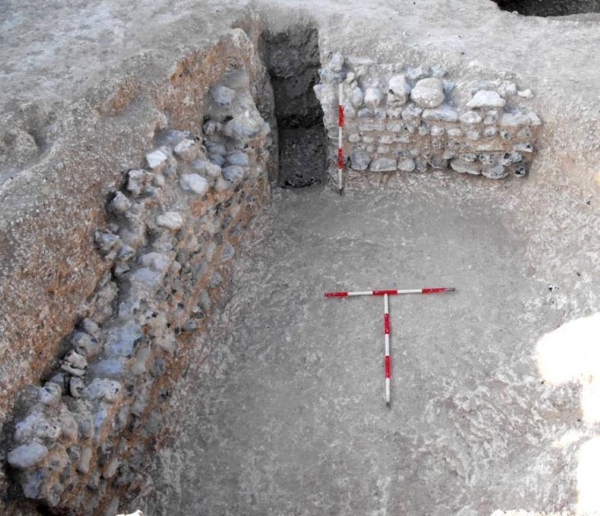
Before the building at Stone Road that featured in yesterday’s VM 365 post was discovered, there were few confirmed archaeological sites of Roman date in the Broadstairs area. Only a few years later, in 2009, a second building was discovered, on the south facing slope of the chalk ridge that forms the northern side of Viking Bay. The site was adjacent to the historic Fort House, which stands on the crest of the promontory overlooking the sea to the east. In the mid 19th century Charles Dickens and his family rented Fort House on several occasions for extended stays, from where it derives its current name of Bleak House.
On the site of a new house which was to be partly terraced into the chalk slope, a number of large soil filled features were found cutting into the surface of the solid chalk geology. The whole site had been heavily truncated by terracing to form platforms for gardens and at one time an orchard.
Excavation revealed that the the pits were in fact large cellars which had been excavated below buildings that once stood on the surface of the chalk, although nothing of these surface structure remained to be recorded. Although two of the cellars seem probably to have been lined with timbers, one had a flat ledge cut around two sides which supported several surviving courses of large water rolled flints, occasionally interspersed with thick flat sherds of Roman amphora.
The wall shown on left side of the image was divided into two sections by a huge nodular flint, which may have supported a post of the structure above. The upper levels of the wall had been destroyed and robbed of its stone, part of the wall had been removed by an engineering test trench excavated before the archaeological investigation began.
Although there had been a great deal of damage to whatever Roman building once stood here, some complex sequences of deposits survived to show that the history of the building was complex and once again hinted at a more complicated story that may not be possible to reconstruct in detail. Almost all the finds associated with the structure were found in the fill of a ditch that had been cut through a gritty sand deposit which had filled the void of the cellar.
Some of these finds will be explored in later VM 365 posts.